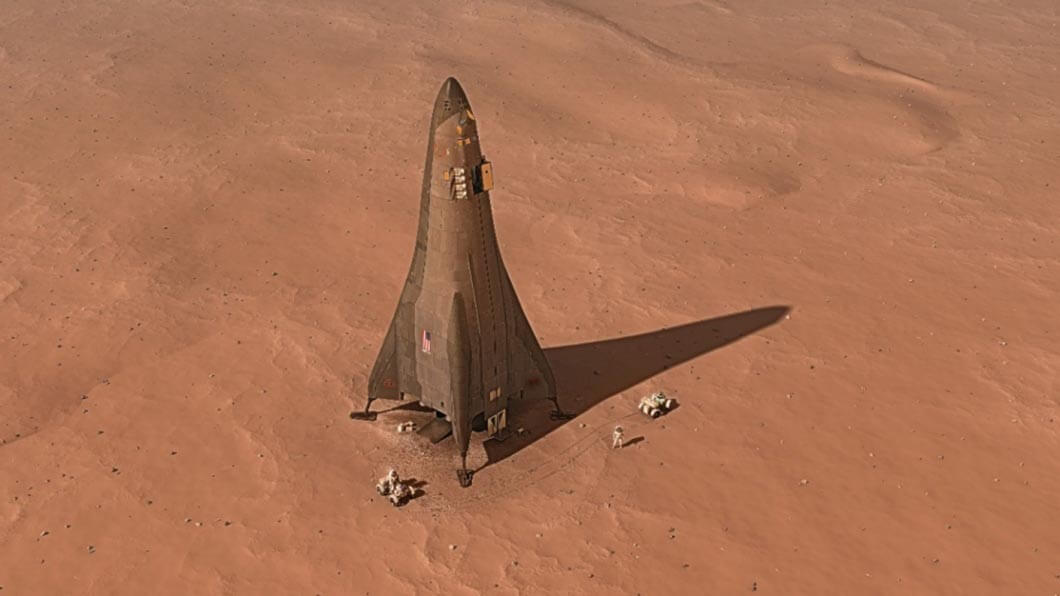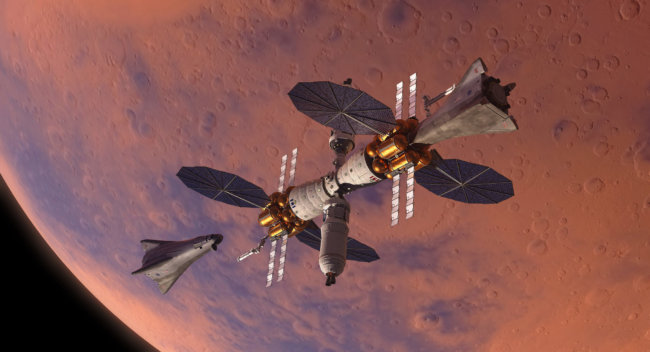
On the last day of the 68th annual meeting of the International Congress of Astronautics held in the Australian city of Adelaide, private aerospace company Lockheed Martin has unveiled details of its plan for the construction of the Mars base Mars Base Camp. For the first time the company has shared plans to build an orbital Martian station last year, just a few months before the head SapceX Elon Musk has unveiled his own plan for early colonization of Mars. Today, Lockheed Martin also managed to run ahead of the locomotive and held a presentation a few hours before that, as did the founder of SpaceX.
In the vision, Lockheed Martin, Mars Base Camp will represent the orbital Outpost around Mars. The station will be for the life of the crew of six astronauts involved in the observation and study of Mars in preparation for subsequent colonization of the red planet.
One of the Central roles in the plan of the company is given space NASA’s Orion, which is also planned to be used in the construction of lunar space station “Deep Space Gateway” (DSG). As stated by the representative of Lockheed Martin at the presentation, “the path to Mars is through low-lunar space” and therefore station of the DSG is intended to be a kind of starting point of space to the red planet and beyond.
Once the Mars Base Camp will take its place in the orbit of Mars before astronauts scientists will be several options of how to produce the observation and study of the red planet. One such option is the lander, which Lockheed Martin concept introduced in the framework of the presentation at the meeting of the IAC. Module, according to the company, will be reusable and will allow astronauts to repeatedly land and take off from the surface of Mars.
“We designed a lander that can refuel in orbit. It has enough space for a crew of four people. The level of autonomy enabling it to live and work for two weeks and then return to the orbital station. The cycle can be repeated many times,” commented senior systems engineer at Lockheed Martin Robert chambers in an exclusive interview with the news Agency CNBC almost directly in front of the presentation.

The image shows the concept of joining the two landing modules to the station Mars Base Camp
In his presentation, Lockheed Martin also shared some technical details of the lander. For example, it will be capable of carrying 80 metric tons of fuel, 30 tons of additional payload, and will have a propulsion system capable of creating nearly 60 kilograms of thrust. The residential section of the module will be equipped with a life support system and various electronics, is based on their own systems of the spacecraft “Orion”.
Reusable, single-stage apparatus will descend to the Martian surface at a speed of 5 km/s, and will also be able to go back to the station Mars Base Camp “without having to produce fuel in place”, as explained, presented Lockheed Martin. For reducing and adjusting the rate of descent he will use his aerodynamics. But most of all the viewers were interested in the phrase: “the Whole system of our system will be able to work on the water.” And it was not only the lander but also the orbital station.
More specifically, as fuel for the lander Lockheed Martin plans to use cryogenic hydrogen.
“Refueled in orbit, the team of four will be enough fuel for two three-week mission on the surface,” shared Robert chambers, one of the developers of the station, Mars Base Camp, at a press conference before the presentation.
It seems that Lockheed Martin have a plan to start the colonization of Mars. During the presentation the company made it clear that the main purpose of the station Mars Base Camp will be conducting a more comprehensive study of Mars and the space around the planet. Ultimate same goal, apparently, is the search for a new place where mankind can settle and find a new home.
Lockheed Martin wants to create a Martian lander
Nikolai Khizhnyak